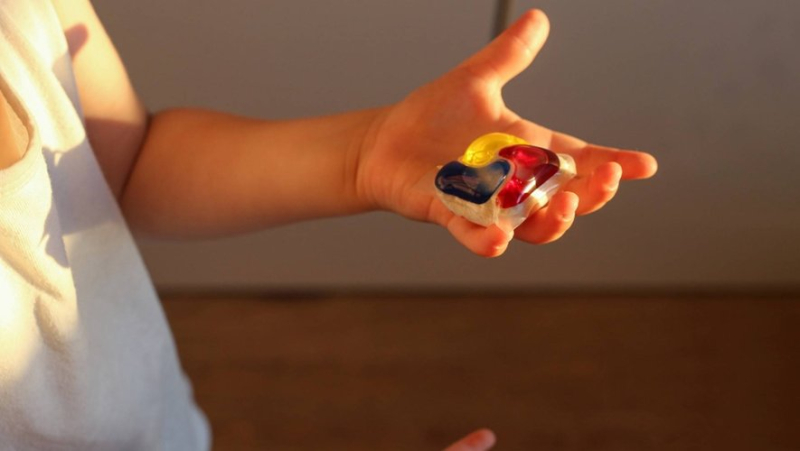Poisoning in children: what are the 5 main risks at home ?

Intoxications des enfants : quelles sont les 5 principaux risques à la maison ?
Lessives, médicaments, monoxyde de carbone… Chaque année en France, des milliers d'enfants sont victimes d'intoxications accidentelles. Dans une récente analyse, l'Agence nationale de sécurité sanitaire a passé en revue les principaux risques à la maison.
It’s during the first years of life, when the child begins to walk and put in his mouth everything that comes to hand, that the risk of ;intoxication is the greatest. Anses recently analyzed the extent of the phenomenon and studied the products that present the most risks.
Laundry detergents and other household products
According to data compiled by the Health Agency over the period 2014-2020, it is, with a third of the accidents, common cleaning products which top the list of pediatric poisonings. On the front line, detergents, powders or liquids, represent half of the poisonings caused by household products. And the water-soluble pods concentrate the most serious problems. If the number of incidents has been halved since the strengthening of safety standards in 2015, ANSES emphasizes that these toxic products "remain too accessible in many homes".
The "pipe unblockers" (although equipped with a safety cap) are not left out : out of 88 serious poisonings recorded by poison control centers, 20% were linked to exposure to this type of corrosive product.
Medicines
They represent the second cause of accidental poisoning (16%) among people under 15 years old. In those under one year old, poisoning was more frequently linked to a therapeutic error by those around them. Beyond this age, the children had access to the medicine on their own. All severities combined, nervous system medications such as analgesics, anxiolytics or antipsychotics were most often involved.
Carbon monoxide
This gas is known to be responsible for collective poisonings, often within families, most often during the winter period. Between 2014 and 2020, carbon monoxide poisoning represented 4% of emergency room visits for children under 6 years old.
Cannabis
Another worryingly increasing phenomenon in recent years: poisoning by ingestion of cannabis among children under 6 years old. They have in fact seen their severity double with an increasing number of admissions to intensive care, going from 4% in 2014 to 11% in 2020. In fact, the ingestion of resin can result in comas or serious respiratory complications.
Button batteries
During the follow-up period, 19 children had swallowed a button battery and two died. Ingestion can very quickly lead to the formation of potentially fatal lesions. The latter are linked to the electric current in contact with the mucosal tissues. They appear at the esophageal level within the first 15 minutes with necrotizing damage, which can reach the aorta within a few hours.
"Out of range…"
As an accident happens quickly, a few actions are essential to prevent these situations:
Keep small objects or household products out of reach of the child Avoid unpackaging: when a household product is transferred into a bottle of water, soda or fruit juice, children are particularly exposed to accidental ingestion Ranger – under lock and key if possible – all medications Ensure the proper use of heating appliances with a risk of carbon monoxide emissions.




